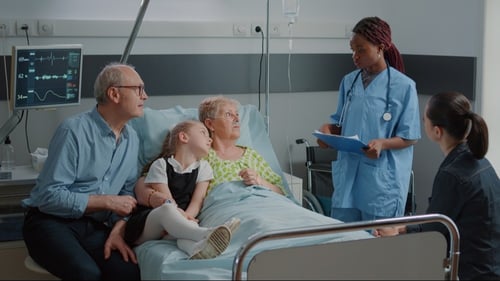Ovarian Cancer: Standard Therapy
Types of Treatment for Ovarian, Fallopian Tube and Primary Peritoneal Cancer
Doctors base treatment recommendations on several factors, including:
- and grade
- Subtype
- Response of cancer to platinum chemotherapy (known as platinum sensitivity)
- Whether the cancer is newly-diagnosed or has recurred after one or more treatments
- Additional testing, including biomarkers and genetic testing for an
Treatment usually involves a combination of the following. Every treatment has potential risks and side effects. Before any new treatment or surgery, make sure your healthcare team tells you what to expect.
Surgery
The goal of surgery for ovarian cancer is complete removal of the cancer.
- If all the visible cancer is removed during surgery, this is known as optimal debulking. Surgery also helps your doctor learn if the cancer has spread.
- In some cases, chemotherapy is given before surgery to help make the tumor smaller to remove as much of the tumor as possible. This is known as neo-adjuvant chemotherapy.
Chemotherapy
- Ovarian cancer is usually treated with drugs known as platinum-based chemotherapy. Two common examples are carboplatin and cisplatin.
- A second type of chemotherapy, called a taxane, is usually combined with the platinum drug. Two common taxanes are paclitaxel and docetaxel.
Chemotherapy may be given in two different ways.
- Intravenous (IV) chemotherapy is injected into a vein.
- Intraperitoneal (IP) chemotherapy is injected through a tube into the abdomen. Intraperitoneal therapy comes with additional side effects, and requires additional surgery to remove the port when chemotherapy is completed.
Doctors use the response to chemotherapy for prognosis and treatment decisions if the cancer comes back.
- Platinum-resistant cancers do not shrink during platinum chemotherapy, or they initially respond but come back within 6 months of treatment.
- Platinum-sensitive cancers respond to platinum treatment and do not recur for at least six months or longer.
Timing of treatment
- The first treatment regimen given is known as treatment. Most people with high-grade and/or advanced ovarian cancer will receive chemotherapy as treatment.
- chemotherapy is given before surgery to treat some advanced cancers. The goal is to shrink the tumors to help the surgeon remove as much of the cancer as possible.
- The goal of chemotherapy after surgery is to prevent recurrence or to control the growth and spread of the cancer.
- Some people with advanced ovarian cancer will also receive or as part of their post-surgery treatment.
- may be given to some people after they complete chemotherapy treatment to keep the cancer from coming back or growing. You can read more on .
- People who have recurrence of their ovarian cancer after their initial treatment may receive additional chemotherapy, or depending on their initial response to treatment and the results of tumor testing. This is known as second-line treatment. For people whose cancer comes back or doesn't respond to second-line treatment, additional lines of treatment may be given.
Treatment side effects
Your healthcare team should explain what you should expect from all treatments, including:
- all of the possible risks and side effects of each treatment.
- which side effects may be serious and how to tell.
- when and who you should call if you experience a side effect.
- what can be done to treat or alleviate each side effect.
Make sure you let your healthcare team know if you experience any side effects of your treatment. For more information about possible treatment side effects, see our section on Cancer Treatment by Treatment Type.
In the News
Topic : Experts call for early palliative care for cancer patients
People with cancer need support and care not only at the end of life...
Update : News from the FDA: New ovarian cancer treatment and imaging drug
The FDA recently approved a new treatment for some people with ovarian...
Despite national guidelines recommending genetic testing, less than 10 percent of eligible...
Study : What influences aggressive end-of-life care for ovarian cancer?
Aggressive medical treatment is often given to people with terminal ovarian cancer...



